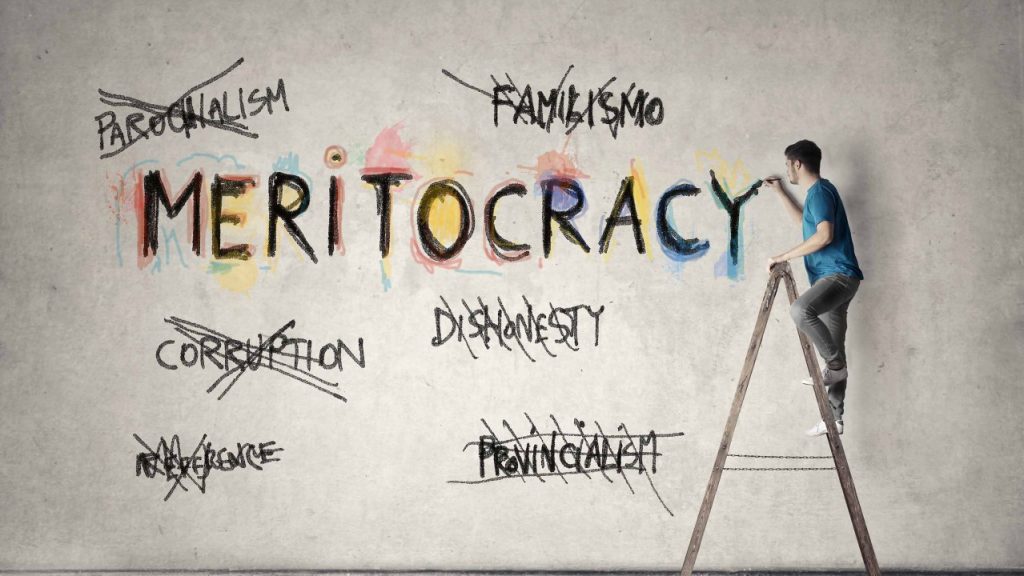Meritocracy Myth: Exposing the Truth About Workplace Fairness
In the modern workplace, the concept of meritocracy is often touted as the gold standard for promoting fairness and equality. The idea behind meritocracy is simple: rewards, promotions, and opportunities should be based on an individual’s skills, abilities, and performance, rather than factors like gender, race, or social background.

However, the reality is far more complex, and the meritocracy myth often masks deeper issues of bias and inequality within organizations. In this blog post, we will delve into the concept of meritocracy, explore its limitations, and expose the truth about workplace fairness.
Understanding Meritocracy
At its core, meritocracy implies that anyone can achieve success and advancement in a workplace if they work hard and possess the necessary skills. It’s a compelling concept that aligns with the principles of equality of opportunity and rewards individual effort and talent. However, the real-world application of meritocracy is not as straightforward as it may seem.
The Myth of a Level Playing Field
Unconscious Bias: Even when individuals believe they are making decisions based solely on merit, unconscious bias can creep in. These biases can manifest in subtle ways, such as favoring candidates with similar backgrounds or communication styles.
Access to Opportunities: The opportunities available to individuals can vary significantly depending on factors like education, family support, and networking connections. Those with greater access to resources may have a head start in the meritocratic race.
Stereotyping: Stereotypes related to gender, race, age, and other characteristics can influence perceptions of merit. These biases can lead to underestimating or undervaluing the potential of certain individuals.
The Impact of Meritocracy Myth
Glass Ceilings: Despite the belief in meritocracy, many organizations have glass ceilings that prevent certain groups from reaching top leadership positions. Women and minorities, in particular, often face barriers that limit their career progression.
Cumulative Advantage: Those who have already achieved success tend to enjoy cumulative advantages. They have access to better opportunities, networking circles, and resources, which can perpetuate their success, leaving others struggling to catch up.
Perceived Fairness vs. Real Fairness: While organizations may claim to be meritocratic, the perception of fairness may not match the reality. If certain groups consistently face obstacles in their career paths, it erodes trust in the meritocratic system.
The Role of Diversity and Inclusion
Diversity: Embracing diversity in the workplace is a crucial step toward addressing the limitations of meritocracy. Diverse teams bring varied perspectives and experiences, which can lead to better decision-making and innovation.
Inclusion: Inclusion goes beyond diversity and focuses on creating an environment where all employees feel valued and have an equal opportunity to contribute. An inclusive workplace is more likely to identify and address unconscious biases that hinder meritocracy.
Moving Towards True Workplace Fairness
Transparency: Organizations should strive for greater transparency in decision-making processes, such as promotions and pay raises. This transparency can help reduce perceptions of favouritism and unfairness.
Education and Training: Employee training on unconscious bias and diversity can raise awareness and promote fairer practices within the workplace.
Structural Changes: Organizations may need to implement structural changes to reduce systemic biases, such as revising hiring practices, conducting pay equity audits, and establishing mentorship programs.
The meritocracy myth, while appealing, often falls short of delivering true workplace fairness. Unconscious biases, unequal access to opportunities, and structural barriers can undermine the ideal of meritocracy. To promote genuine fairness and equality, organizations must go beyond the myth and actively address issues related to diversity and inclusion.
By acknowledging the limitations of meritocracy and taking steps to mitigate bias, workplaces can move closer to creating environments where individuals are truly rewarded based on their skills, abilities, and contributions, regardless of their background or identity. Achieving this vision of fairness requires ongoing commitment and vigilance to dismantle the hidden barriers that persist within our workplaces.
Do you like the article? Please comment, and share with loved ones. You can as well buy me a drink through this link. You can read more about work here.



